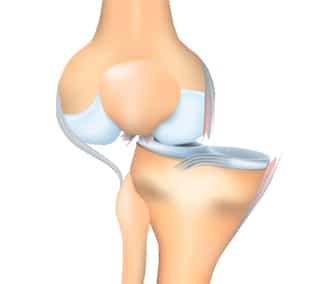What is a Knee Dislocation?

A dislocated knee (knee dislocation) occurs when the thighbone position gets bumped out of place. Thereafter, the knee ligaments begin to tear. Therefore, causing the bones to slip out of place.
The position of the knee is the ligament’s responsibility to hold it together. But when trauma to the leg occurs, a dislocated knee happens. This is typically the cause of a car accident, a fall, or a sports injury. Many people believe that a dislocated knee and a dislocated kneecap are the same. However, they are far from similar.
A dislocated kneecap happens when the kneecap itself slips out of place. And this can happen from a sudden change in direction to a blow to the knee. In fact, it commonly occurs when the foot is grounded firmly to a surface. A dislocated kneecap is far more common than a knee dislocation. However, a dislocated knee crucial, because it often damages blood vessels, ligaments and nerves.
Causes of a Dislocated Knee
A knee dislocated is more common in sports, when players collide with each other. However, it can occur also from the following:
- Hard falls: This type of dislocation is most common among runners and skiers who lose control and fall on over-extended or bent knees.
- Car accidents: If the knee hits against a hard surface like a dashboard, the force of the impact can disrupt the knee.
Symptoms of a Knee Dislocation
A dislocated knee will not go unnoticed. Although they will worsen over time. There are commonly recorded symptoms though, such as:
- A pop sound at the time of the injury
- A noticeable joint deformity
- Knee swelling
- Severe knee pain
- Limited range of knee movement
Diagnosing a Dislocated Knee
The first thing you need to do for a proper diagnosis is to see a knee specialist. The physician will start off by repositioning the knee. Therefore, allowing for the pressure to be reduced on the blood vessels, and nerves. He/she will next assess the severity of the injury. This will be done by determination of stability of the knee.
Additional steps are as follows:
- Checking the dorsal pedal and posterior tibial pulses. A low pulse indicates an injury to the blood vessel
- Checking the blood pressure of the leg. Low blood pressure means poor blood flow to the lower extremities
- Testing for nerve conduction to determine the function of the nerves in the knees and legs
- Identifying any changes in the color of the leg
How is the Injury Treated?
To fix a dislocated knee, a procedure is common after the knee is popped back into place. Although if the knee injury is not severe, conservative methods will be considered when:
- The joint looks stable after the reduction procedure
- There is no evidence of damaged blood vessels or nerves
- The collateral knee ligaments remain intact
If you are experiencing a knee dislocation call us 888-409-8006. Our top knee specialist is located in Boca Raton, Deerfield, coral springs, and Plantation.
